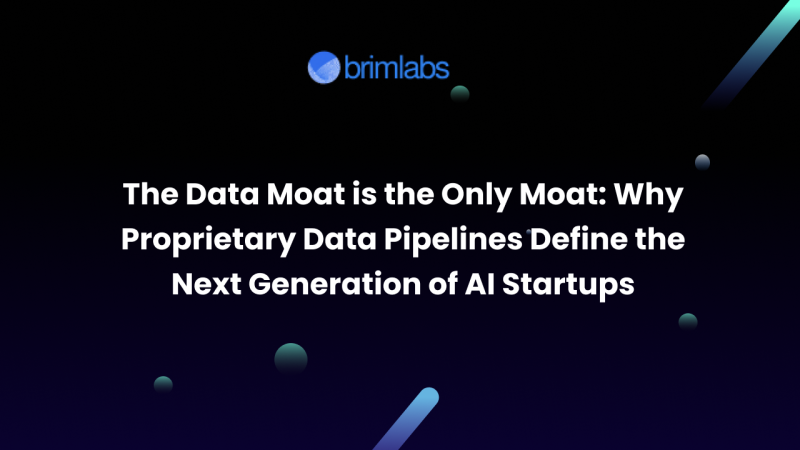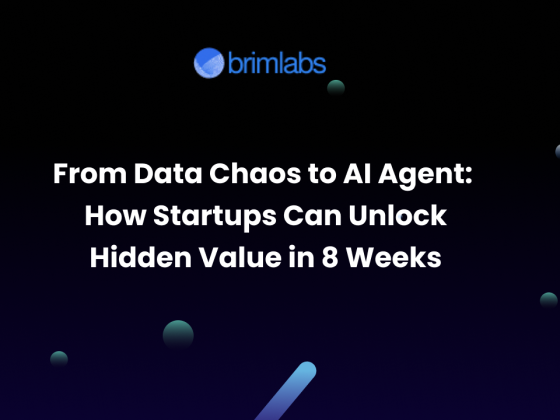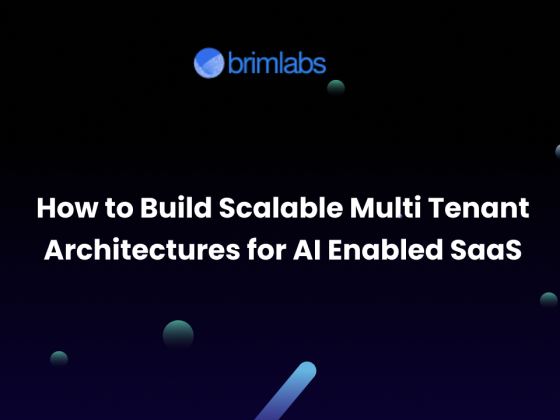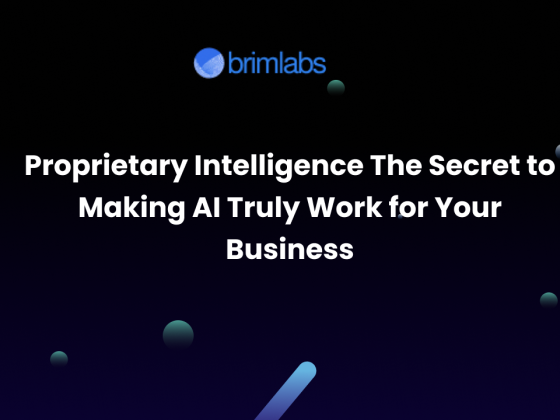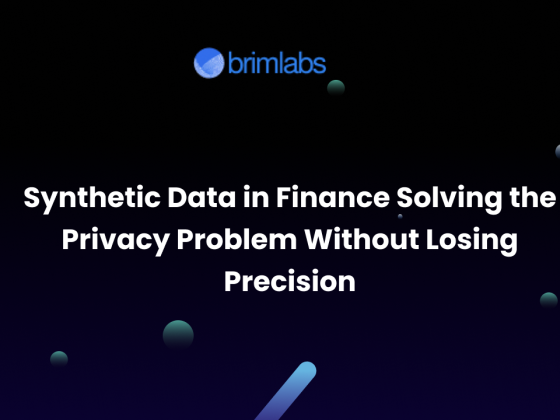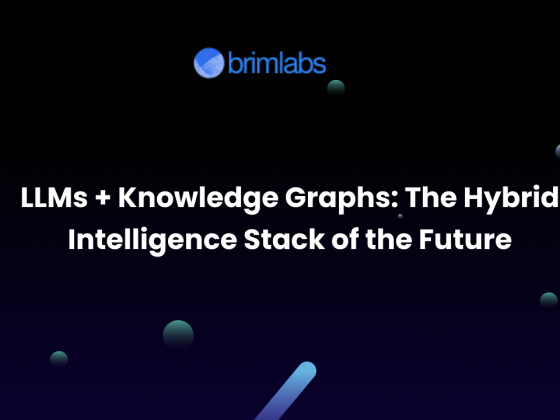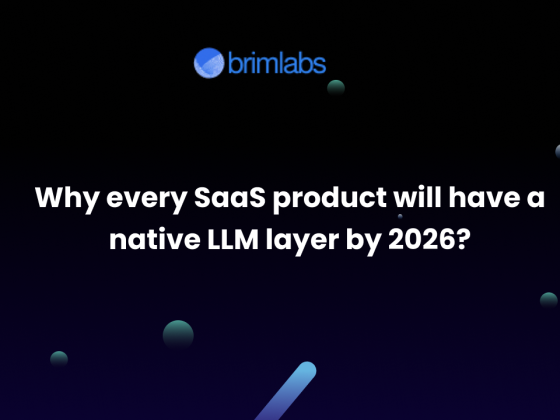Every few months, a new model family reshapes the AI landscape Each time, startups that built thin wrappers over these foundation models scramble to differentiate. What once seemed like a technical moat disappears overnight.
The truth is simple: model access is no longer a competitive edge. Anyone with an API key can build a chatbot, summarizer, or recommendation engine. The real differentiator lies not in the model, but in what fuels it, data.
Why Models Have Become Commodities
A few months ago, training and hosting large models required millions of dollars and deep expertise. Today, every startup can spin up an AI feature through an API call. OpenAI, Anthropic, Google, and Meta have made world-class models accessible on demand.
This democratization is a double-edged sword. It accelerates innovation but also levels the playing field. The ease of integration means ten different products can now produce nearly identical outputs. As benchmarks converge, performance becomes less about model sophistication and more about what data you feed it.
In this new paradigm, access to the model is table stakes. The startups that endure are the ones who own their data loops, the closed feedback cycles that constantly refine, specialize, and personalize model behavior.
The Rise of the Data Moat
A data moat refers to proprietary datasets and data collection mechanisms that are uniquely available to your product. These can be:
- Private user interaction logs
- Domain-specific transaction data
- Labeled feedback loops
- Behavioral analytics
- Edge-case error corrections
- Human-in-the-loop review systems
While models are commoditized, datasets are not. A dataset that captures the subtleties of your users, workflows, and outcomes is extremely hard to replicate. It becomes your defensible advantage, your moat.
Let’s break down the three pillars of building such a moat.
1. Private Datasets: Turning Usage Into IP
Every user action, transaction, and query is a signal. Most startups collect it but rarely use it strategically. A proprietary dataset emerges when you systematically capture, clean, and label these signals for model fine-tuning or retrieval.
What to capture
- Contextual inputs: Queries, metadata, environment, and user intent.
- Outputs and corrections: The user’s follow-up behavior tells you if the system’s response was useful.
- Hidden insights: Timing, sequence, and co-occurrence of events reveal deep behavioral patterns.
For example, in a digital health product, anonymized conversation data between patients and providers tagged by symptom, urgency, and resolution quality becomes a goldmine. It allows models to learn domain language, tone, and decision patterns that generic models cannot mimic.
How to operationalize it
- Build structured event pipelines from the first day. Use tools like Snowflake, BigQuery, or Redshift.
- Automate ETL and labeling with lightweight data orchestration (Airflow, Prefect, Dagster).
- Enforce data versioning using Lakehouse standards or tools like DVC to track dataset lineage.
- Periodically fine-tune or re-rank your models using the cleaned data.
Every refinement tightens your feedback loop and widens your moat.
2. Client Feedback Loops: Human-in-the-Loop as a Growth Flywheel
A startup’s early users are its unpaid research lab. They reveal failure points, edge cases, and preferences that large model providers can’t capture.
Instead of treating feedback as bug reports, treat it as training data.
Embed feedback into the product
- Allow users to rate or correct model outputs directly within the interface.
- Create adaptive reward systems where consistent feedback improves personal accuracy (for example, “teach your AI” flows).
- Aggregate this data into a continuous learning pipeline that updates prompt templates, embeddings, or fine-tuned layers.
The more your product learns from its users, the harder it becomes to clone. Two teams may start with the same base model, but the one that integrates structured feedback turns its user base into a self-reinforcing moat.
This approach doesn’t just improve performance, it aligns your business growth with data quality. More users mean more edge-case coverage, better retrieval accuracy, and more predictive power.
3. Edge-Case Intelligence: The Hidden Layer of Defensibility
Every industry has outlier scenarios that define trust. In finance, it’s detecting fraudulent but rare transactions. In healthcare, it’s handling ambiguous symptoms. In logistics, it’s responding to unforeseen disruptions.
Generic AI models struggle with these edge cases, because such examples rarely appear in public training data. That’s where your startup’s moat deepens.
Capturing and labeling these rare patterns creates edge-case intelligence, a collection of contextualized examples that train your system to handle complexity gracefully.
Steps to build edge-case intelligence
- Tag anomalies: Build anomaly detection into your data pipeline using statistical or embedding-based methods.
- Cluster and analyze: Use tools like Pinecone or Weaviate to group similar anomalies and find underlying causes.
- Integrate into retraining: Feed these labeled anomalies back into your fine-tuning process or specialized sub-models.
When your AI can reliably handle the 1% of cases that others fail at, you win enterprise trust, and that is nearly impossible to replicate.
Why Synthetic Data Won’t Replace Proprietary Data
Many founders assume synthetic data can fill the gaps. While synthetic augmentation helps scale datasets, it doesn’t replace authentic, user-driven context.
Synthetic data mimics what’s already known. Proprietary data captures what others don’t know yet, the evolving nuances of human behavior, preferences, and edge interactions.
A strong data moat doesn’t depend on scale alone but on specificity and ownership. It’s the difference between having 10 million generic samples and 10,000 high-signal, high-context interactions that your competitors can’t recreate.
Designing the Data Architecture for a Defensible AI Startup
Building a data moat requires deliberate architectural thinking from day one. The pipeline is your foundation, how you capture, process, and reuse data defines the pace of your advantage.
A modern data moat architecture should include:
- Collection Layer: Instrumentation in apps and APIs to capture structured event streams.
- Storage Layer: Centralized data lake or warehouse with strict governance, audit logs, and schema evolution.
- Processing Layer: Automated ETL, anonymization, labeling, and feature extraction.
- Feedback Loop Layer: Interfaces that capture corrections, preferences, and failure cases.
- Training Layer: Scheduled fine-tuning or RAG indexing jobs that continuously update models or embeddings.
- Monitoring Layer: Drift detection and retraining triggers based on performance decay or new data distributions.
This architecture doesn’t just enable analytics, it turns your product into a living organism that learns faster than competitors.
The Compliance Multiplier
As enterprises and regulators tighten scrutiny, compliance becomes a moat multiplier. SOC 2, HIPAA, and GDPR-aligned pipelines prove that your data is not just valuable but trustworthy.
Startups that can demonstrate compliant data handling will win enterprise contracts faster. Moreover, the frameworks you establish for privacy and traceability also reinforce your internal moat, no competitor can access your data without replicating your compliance infrastructure.
When the Model Shifts, the Moat Remains
When GPT-6, Gemini 3, or Claude 4 arrive, startups that are built solely on model quality will need to start over. But those that are built on proprietary data can port their moat forward.
Whether you migrate from OpenAI to Anthropic or to your own fine-tuned model, your data remains the core differentiator. It’s the layer that carries your brand intelligence, your user patterns, and your domain wisdom.
That persistence is what turns startups into category leaders.
The Future of AI Startups: From Model Wrappers to Data Owners
In the coming wave of AI companies, the winners won’t be those who integrate faster, they’ll be those who learn deeper. The shift from “who has the best model” to “who has the best data” is already underway. Building your moat now means:
- Capturing every signal.
- Structuring every interaction.
- Embedding user feedback loops.
- Owning the edge cases that others ignore.
As models become commodities, your data becomes your IP.
Final Thoughts: The Brim Labs Perspective
At Brim Labs, we’ve seen this play out across FinTech, Healthcare, SaaS, and E-commerce products. The products that sustain differentiation are those with intentional data architectures and continuous feedback learning.
We help founders design these proprietary data pipelines, from event tracking to edge-case learning, so that even when models evolve, their value compounds.
Because in the next decade of AI innovation, the model may be shared, but the data moat is yours to build.

